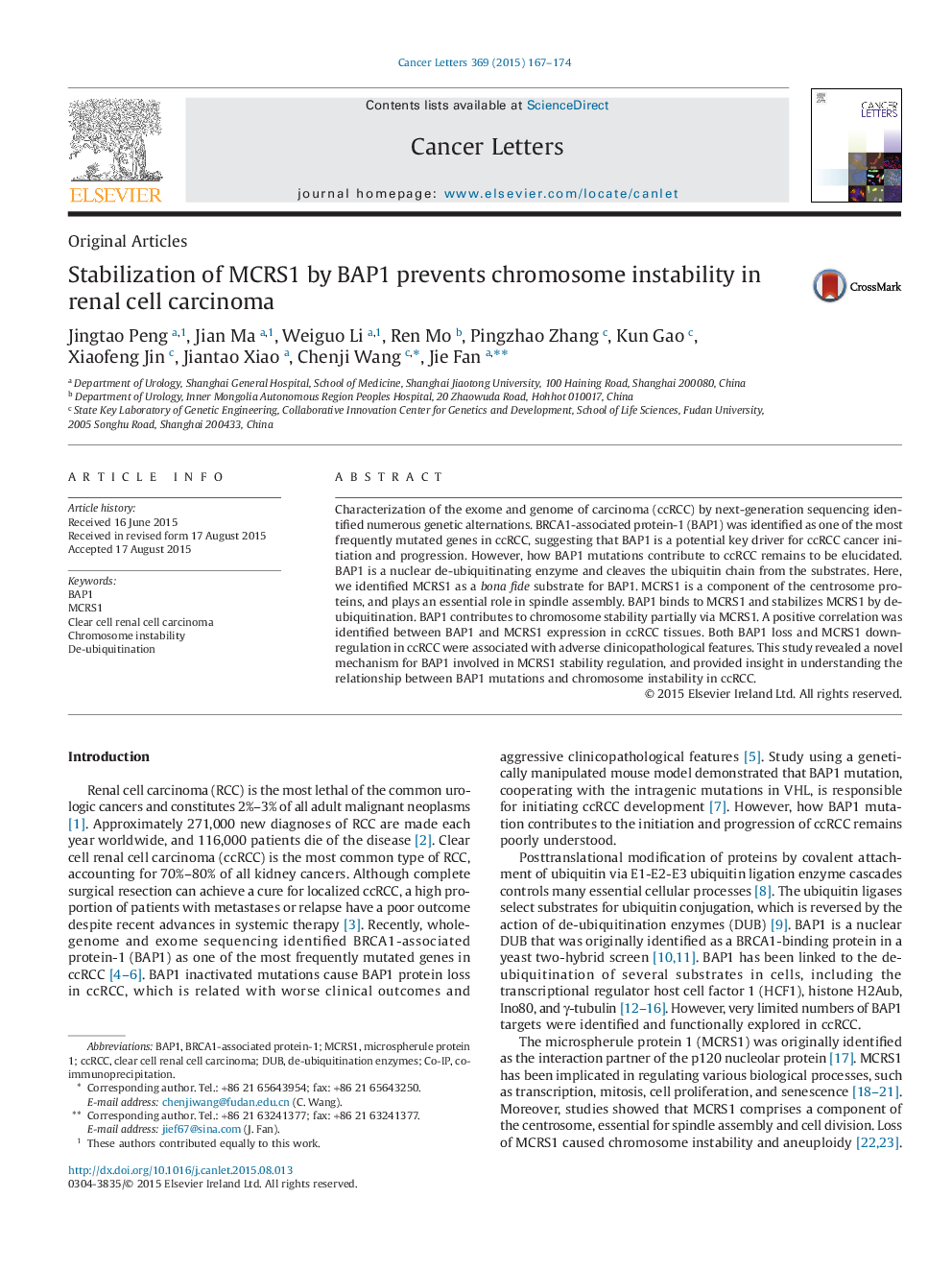| Article ID | Journal | Published Year | Pages | File Type |
|---|---|---|---|---|
| 10901915 | Cancer Letters | 2015 | 8 Pages |
Abstract
Characterization of the exome and genome of carcinoma (ccRCC) by next-generation sequencing identified numerous genetic alternations. BRCA1-associated protein-1 (BAP1) was identified as one of the most frequently mutated genes in ccRCC, suggesting that BAP1 is a potential key driver for ccRCC cancer initiation and progression. However, how BAP1 mutations contribute to ccRCC remains to be elucidated. BAP1 is a nuclear de-ubiquitinating enzyme and cleaves the ubiquitin chain from the substrates. Here, we identified MCRS1 as a bona fide substrate for BAP1. MCRS1 is a component of the centrosome proteins, and plays an essential role in spindle assembly. BAP1 binds to MCRS1 and stabilizes MCRS1 by de-ubiquitination. BAP1 contributes to chromosome stability partially via MCRS1. A positive correlation was identified between BAP1 and MCRS1 expression in ccRCC tissues. Both BAP1 loss and MCRS1 down-regulation in ccRCC were associated with adverse clinicopathological features. This study revealed a novel mechanism for BAP1 involved in MCRS1 stability regulation, and provided insight in understanding the relationship between BAP1 mutations and chromosome instability in ccRCC.
Keywords
Related Topics
Life Sciences
Biochemistry, Genetics and Molecular Biology
Cancer Research
Authors
Jingtao Peng, Jian Ma, Weiguo Li, Ren Mo, Pingzhao Zhang, Kun Gao, Xiaofeng Jin, Jiantao Xiao, Chenji Wang, Jie Fan,
